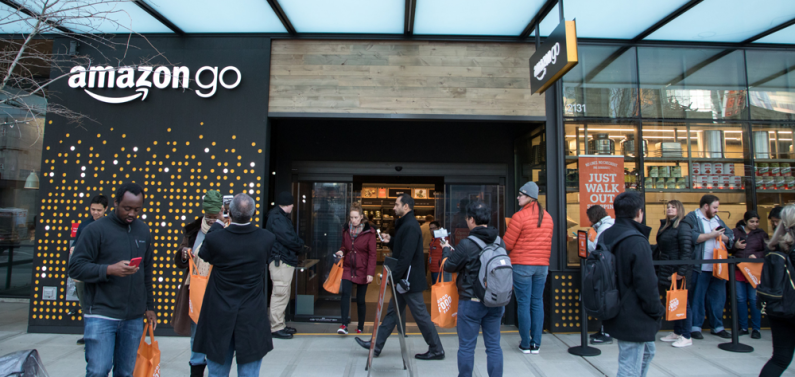Hot Tips for Selling Perfume Online
- Price smart at $65–$85 - This range hits the sweet spot for value and profit. It’s where most top-selling perfumes land—and what shoppers are comfortable spending.
- Start lean with a no-inventory model - Try dropshipping to test which scents and audiences respond best—without the upfront cost or storage stress of bulk buying.
- Sell the scent experience - Focus on how the fragrance feels, not just the notes. Use emotional, sensory language to help buyers imagine wearing it.
Everyone wants to smell good—and for many people, applying perfume or cologne has become a core part of daily life. Fragrance isn’t just a product; it’s a reflection of personality, mood, and even lifestyle. It’s emotional. It’s expressive. And from a business perspective, it’s highly profitable.
Like many health and beauty products, perfume is one of those rare items that blends impulse purchases with long-term brand loyalty. Whether it's a gift, a luxury splurge, or a personal signature scent, fragrance has managed to secure a timeless place in the market. So while big-name brands dominate advertising space, small business owners and online sellers are discovering there’s still massive potential in the industry—especially when you know where and how to carve out your niche.
With the rise of eCommerce, the fragrance industry has seen an explosion in new business models, including dropshipping, private labeling, and niche curation. This article will walk you through how to take advantage of that shift, backed by fresh market data, SaleHoo’s insider tools, and smart selling strategies designed for modern entrepreneurs.
Why Selling Perfumes Online Still Makes Sense in 2025
Despite increased competition, the online perfume market is far from saturated. In fact, the global fragrance market is currently valued at $55.7 billion and is forecasted to grow to $70.2 billion by 2028. Much of this growth is being driven by younger consumers—particularly Gen Z and millennials—who are increasingly making fragrance purchases online. These buyers are adventurous and digitally savvy, often influenced by trends on TikTok or YouTube, and less loyal to traditional brands than older generations.
One striking trend is the shift toward personalization and niche fragrances. Consumers want scents that feel unique or that reflect their identity. Gender-neutral perfumes, clean fragrance formulations, and travel-size discovery sets are more in demand than ever before. This change opens the door to indie brands, boutique sellers, and online retailers that offer curated or value-focused selections.
Online fragrance sales are growing at a rate of around 14% year over year, according to Statista. What makes this particularly exciting for eCommerce sellers is that perfume remains a high-margin product that doesn’t require much storage space and is relatively easy to ship. While customers can’t smell the product through a screen, compelling storytelling, high-quality branding, and strategic positioning help sellers overcome that hurdle with great success.
Understanding Fragrance Types and Buyer Expectations
When selling perfumes online, educating your customers about fragrance types is essential—especially since they can’t sample scents through a screen. Clear, helpful explanations not only build trust but also guide shoppers who may not be fragrance experts. Scent preferences often vary based on lifestyle, climate, and personal identity. For instance, lighter fragrances like Eau de Cologne or Eau Fraîche are ideal for warmer climates or active routines, while richer options like Parfum or Eau de Parfum are better suited for cooler weather or more formal settings. Younger buyers often gravitate toward affordable, trendy EDTs, while professionals may seek refined, long-lasting EDPs. By understanding these differences and tailoring your product descriptions accordingly, you’ll help customers find the right scent—and position your brand as a knowledgeable, customer-focused resource.

- Parfum (Extrait de Parfum) has the highest fragrance concentration—20% to 40%—and lasts up to 8 hours or more. It’s luxurious, long-lasting, and ideal for evening wear or special occasions. With a premium price point, it appeals to professionals, collectors, and shoppers seeking standout, high-end scents.
- Eau de Parfum (EDP) contains 15% to 20% aromatic oils and lasts 4 to 6 hours. It’s a popular everyday option, offering richness without being overpowering. EDPs strike a balance between luxury and practicality, making them appealing to a wide demographic of men and women.
- Eau de Toilette (EDT) is lighter, with 5% to 15% oil concentration and a wear time of 2 to 4 hours. It’s typically used as a casual or daytime scent and is popular with younger or budget-conscious consumers. EDTs are ideal entry-level products and work well for seasonal or repeat-purchase promotions.
- Eau de Cologne (EDC) contains 2% to 4% oils and lasts up to 2 hours. It’s often fresh, citrusy, and refreshing—great for warm climates or quick spritzes throughout the day. EDCs are affordable and appeal to younger buyers or those seeking light, easy-wear scents.
- Eau Fraîche has the lowest concentration—1% to 3%—with most of the base being water. It’s gentle, short-lasting, and perfect for sensitive skin or light layering. It appeals to eco-conscious, wellness-focused, or minimalist shoppers.
Current Market Trends and Buyer Demand
Consumer interest in perfumes remains strong and continues to grow. In the U.S., keyword research shows that terms like “perfume for women” receive 7,400+ monthly searches, while “best long-lasting perfumes” gets 4,200, and “unisex fragrances” draws 2,100. These search trends reflect real buying intent, and show that consumers are not only browsing—they’re actively researching the best scents for their preferences and needs.
Search volume also spikes around seasonal shopping events—Valentine’s Day, Mother’s Day, Black Friday, and December holidays—as gift sets and curated collections become top-selling items. This seasonal demand offers huge promotional opportunities for sellers who plan ahead.
Most best-selling perfumes on platforms like Amazon and eBay fall within the $65–$85 price range. This price point reflects high perceived value, and with the right branding, still offers healthy profit margins. Tools like SaleHoo’s Market Insights show that bestselling fragrances such as Acqua Di Gio and Marc Jacobs Daisy maintain sell-through rates above 60%, meaning there’s still plenty of room to succeed—even in popular categories.
Trends in Selling Perfume Online
Trend |
What It Means |
How You Can Profit |
|---|---|---|
| Niche & Indie Fragrances | Small-batch, artisan scents are in demand. | Private label or source indie brands via the SaleHoo Directory. |
| Gender-Neutral Scents | Gen Z prefers inclusive, non-binary options. | Use inclusive messaging and target unisex fragrance keywords. |
| Clean & Eco-Friendly Fragrances | Cruelty-free, vegan, and natural formulations are trending. | Source clean beauty brands via SaleHoo Dropship. |
| TikTok & Influencer Marketing | #PerfumeTok drives huge discovery. | Partner with micro-influencers and promote viral-style content. |
| Layering & Bundles | Buyers want customization and variety. | Sell sample sets or bundle oils, sprays, and candles together. |
| Subscription Boxes | Shoppers like trying scents before committing. | Launch discovery kits or sample subscriptions. |
| Travel & Mini Sizes | Portable perfumes are popular and gift-friendly. | Offer minis as entry products or add-ons. |
| Emotional Storytelling | Buyers connect through mood, memory, and identity. | Focus descriptions on how the scent makes customers feel. |
| Increased Online Spending | Average perfume spend now sits at $70–$85. | Position products within this range for best conversion. |
| Gift Personalization | Fragrance remains a go-to gift. | Offer engraving, custom wrapping, and curated gift guides. |
Where to Source Perfume Products to Sell
Building a successful perfume business starts with sourcing. The right supplier ensures product authenticity, competitive pricing, and reliable fulfillment—crucial for maintaining customer trust and healthy profit margins, especially when selling premium or designer scents.
The SaleHoo Directory connects you with hundreds of verified perfume suppliers, from large-scale wholesalers of top designer brands to boutique fragrance labs open to private or white labeling. Most offer global shipping and flexible order quantities, making it easy to scale your business. If you’re looking to create your own exclusive line, many suppliers also support custom scent development and branding.
If you're looking for a lower-risk way to start, SaleHoo Dropship is a great option. It lets you import trending perfume products into your Shopify store with just one click—no inventory or upfront investment needed. You only pay after making a sale, making it perfect for testing product ideas or building your store gradually.
Products on SaleHoo Dropship come with high-quality images, ready-to-use product descriptions, and fulfillment handled by trusted suppliers, often with fast shipping from US or global locations. This setup makes it easy to present your store professionally and get to market quickly.
Whether you're reselling name brands or launching a private label, both sourcing methods offer the tools to grow your business at your own pace. You can even start with dropshipping to test demand, then move to wholesale as your volume increases—giving you flexibility while staying lean and competitive.
Positioning Your Perfume Brand Online
- Focus on branding and storytelling, not just the product. Since customers can't physically smell perfumes online, your copywriting, visuals, and emotional appeal become the key drivers of conversion. Build a brand that evokes a feeling or lifestyle rather than simply listing ingredients or specs.
- Craft emotionally driven product descriptions. Go beyond listing the name or size. Describe each fragrance's top, heart, and base notes using sensory and evocative language—think “a sparkling citrus opening that softens into a warm, woody base.” Highlight the mood it creates and when it should be worn, such as for daytime outings, romantic evenings, or professional settings.
- Create a lifestyle narrative for every scent. Position each perfume as part of a story or identity. Instead of saying “men’s cologne 100ml,” describe it as “a confident, citrus-woody blend perfect for bold city nights.” Help the customer imagine how they’ll feel wearing it—whether that’s radiant, mysterious, empowered, or seductive.
- Tailor your messaging to your audience. Align your tone, visuals, and descriptions with the expectations of your target buyer. A Gen Z shopper may be drawn to bold, edgy, or gender-fluid branding, while an older luxury customer might prefer elegance, heritage, and sophistication.
- Leverage social media to showcase your fragrances. Platforms like TikTok, Instagram, and YouTube are filled with scent-based content—from “fragrance of the day” to “blind sniff tests.” Tap into this by partnering with influencers, gifting samples, or running storytelling campaigns that show how your fragrances fit into real lives.
- Use micro-influencers and UGC to build trust. Sending sample kits to niche fragrance reviewers or beauty content creators can help spread the word authentically. Gen Z and Millennial audiences are especially responsive to peer-based recommendations and real-life experiences.
- Invest in consistent, polished visuals. Your product photography and ad creatives should reflect your brand’s tone—whether that’s luxurious, minimalistic, playful, or bold. High-quality imagery, consistent editing styles, and cohesive colors make your store feel professional and trustworthy.
- Build an emotional brand identity. A consistent brand story—from your logo and packaging to your social captions and website design—helps customers emotionally connect with your products. The stronger the brand, the more likely they are to return or refer others.
Building a Profitable Strategy for Growth
Sustainable growth comes from having a focused, adaptable plan. Start with a niche—like affordable unisex scents or clean fragrances—and build a curated product line. Use SaleHoo Market Insights to track trends, pricing, and keyword demand so you’re stocking what people actually want.
Listen to your customers. Use reviews and social engagement to refine your offerings and identify opportunities for complementary products like candles, diffusers, or bath items that align with your brand and boost average order value.
Bundle products into discovery sets, gift boxes, or seasonal promotions to increase cart size. These offer perceived value and perform especially well during peak shopping periods.
Encourage retention through loyalty programs and referral rewards. Small touches like birthday discounts or early access to new drops create repeat customers and generate word-of-mouth.
As your store grows, scale smart. Use SaleHoo Dropship to test new scents without inventory risk. Monitor performance metrics and adjust quickly. Success comes from staying close to your audience and continually optimizing your offerings based on data and behavior.
In the end, a successful perfume brand isn’t built on scent alone—it’s built on strategy, storytelling, and staying one step ahead of your market.
Are you currently dropshipping perfumes, buying wholesale, or still exploring your options? Whether you’re already selling or just starting to research how to break into the fragrance market, we’d love to hear from you. Share your plans, ask questions, or tell us what’s holding you back—we’re here to help.
Leave a comment below and join the conversation with other aspiring and established perfume sellers! 👇














5 Comments